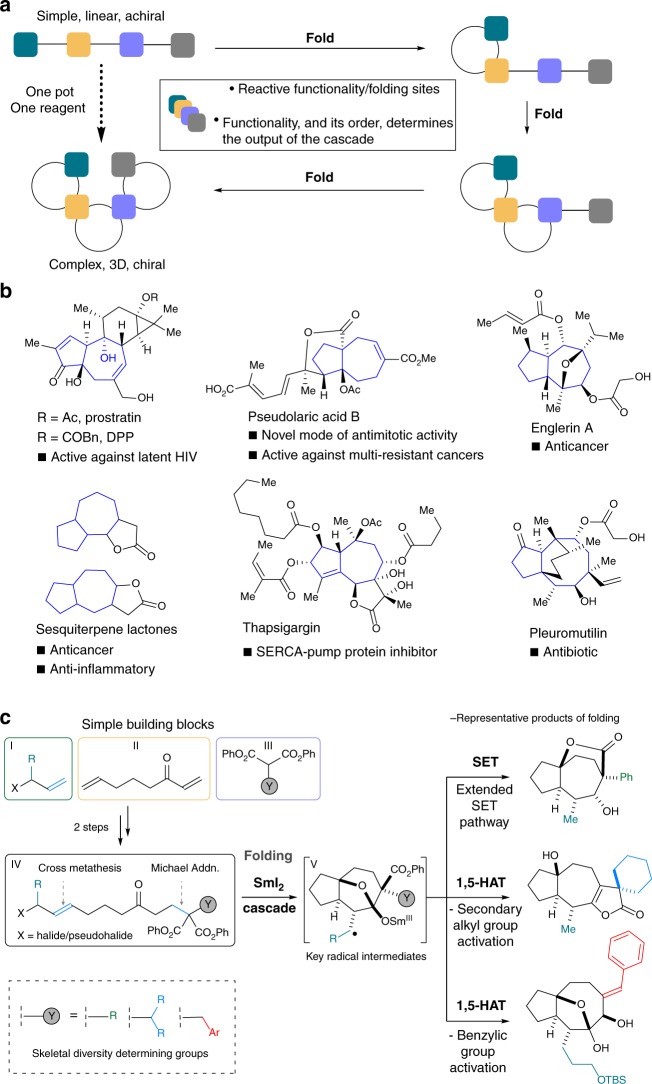Fig. 1.
A folding cascade approach that delivers polycyclic architectures and the samarium(II) folding cascade approach. The folding cascade approach, examples of biologically active natural products bearing [5,7] and [5,8] fused bicyclic motifs, and a samarium(II)-mediated, one-pot cascade reaction enabling access to these architectures, are shown. a Folding cascade approaches convert simple, linear starting materials to complex 3D polycyclic architectures through the sequential action of a single reagent on functional groups arranged in the substrate to be folded. b Biologically relevant natural products possessing multiple stereocentres and sites of oxygenation, and [5,7] or [5,8] ring systems include prostratin, pseudolaric acid B, englerin A, sesquiterpene lactones such as thapsigargin, and pleuromutilin. c This work involves the development of a one-pot approach to complex polycyclic architectures from simple starting materials. The approach exploits samarium(II) folding cascades featuring 1,5-HAT functionalisation of tertiary and benzylic C–H bonds

